
Where We Be
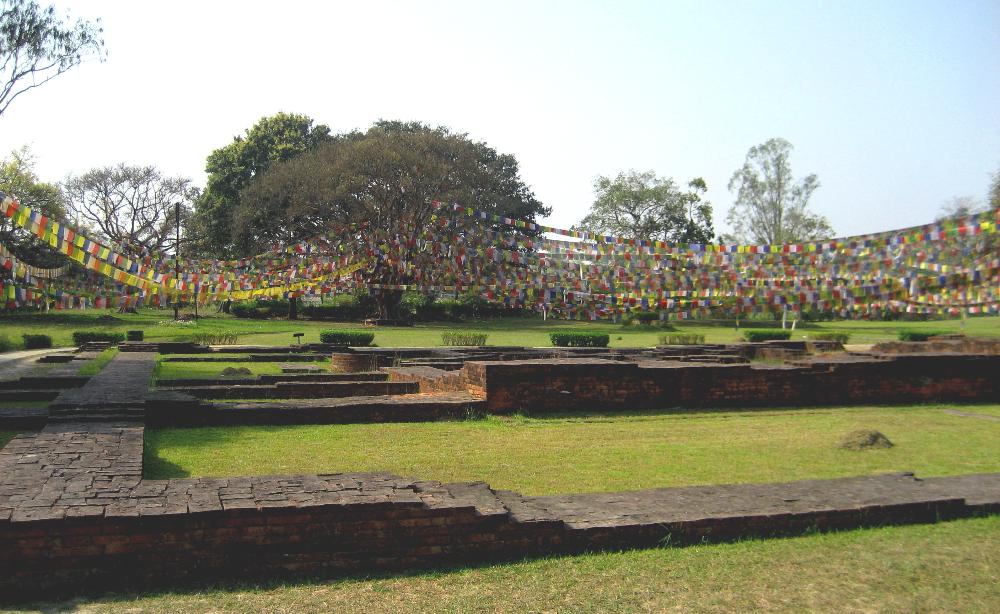
| The bodhi tree at the site of Buddha's birth is barely visible beneath all the prayer flags |
| The same bodhi tree seen from a distance, with the ruins of ancient Buddhist temples in the foreground |
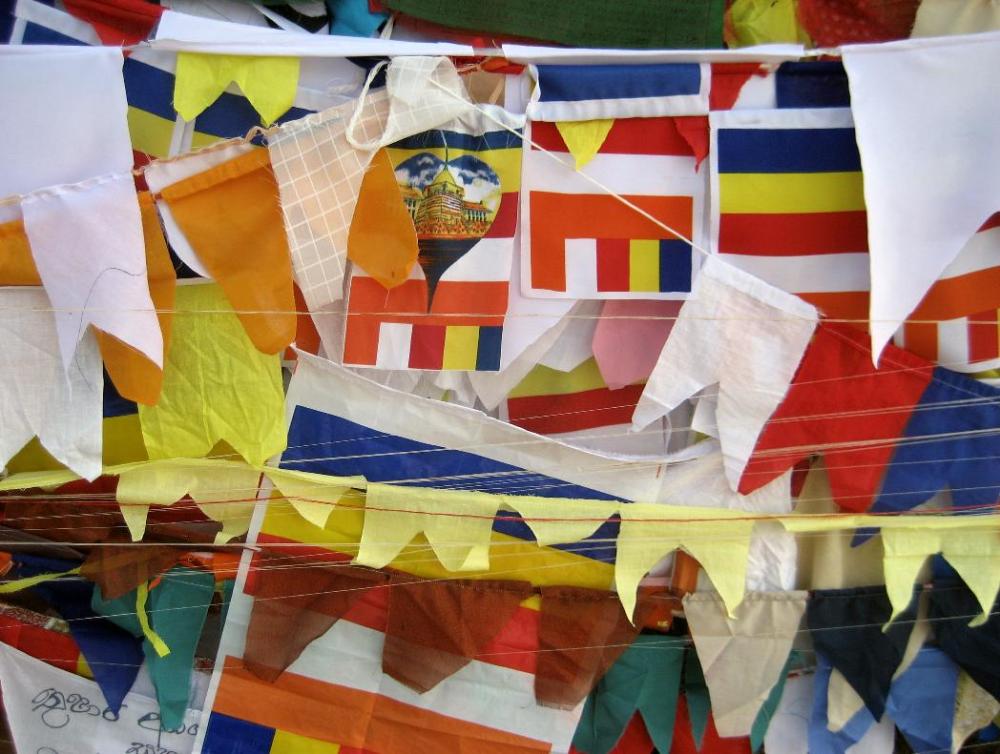
| In places the trunk is completely hidden beneath layers of prayer flags |
| Buddhists approached the tree with reverence, circling it and making offerings |
| The column behind us was placed here in 250 BC to mark the site of Buddha's birthplace and is sacred to Buddhists |
| Monks in saffron and maroon robes chanted quietly at the base of the column |
| Inside the building are ancient temple foundations and a marker stone behind bulletproof glass identifying the exact birthplace of Buddha |
| The Vietnamese temple has some elaborate landscaping in progress |
| This sweet woman showed us around the Nepali temple |
| Enjoying the cool air inside the Nepali temple |
| The eyes on the Nepali temple followed us through the woods |
| The Chinese temple looks like a building straight out of the Forbidden Palace |
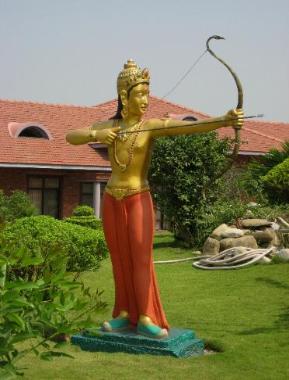
| The German temple grounds are groomed and immaculate, giving the best sense of what the whole complex may eventually look like |
| We made our first clockwise circuit around a prayer wheel |
| A series of life-size statues at the German temple depict the life of Buddha -- for instance, as a young and sheltered prince (left) and as a master teacher (right) |
| Lumbini, Nepal (Buddha's Birthplace) |
Lumbini is the place where Siddhartha Gautama,
better known as Buddha, was born. Maya Devi
Temple marks the spot of his birth beneath a
bodhi tree around 623 BC. Today the site, near
the border of Nepal and India, attracts Buddhist
pilgrims from around the world. The first thing
we saw at Maya Devi was a bodhi tree draped in
literally thousands of prayer flags. We circled
the huge tree, which is representative of the
one under which Buddha was born. Buddhists
approached the tree with reverence, circling it
and making offerings.
Nearby was the Sacred Pond in which Buddha’s
mother bathed before giving birth. The "pond"
is now a rectangular pool of water, so that was a
surprise to us. Nearby, inside a white brick
building, is a stone marker behind bulletproof
glass that is said to mark the exact spot of his
birth. Archaeological evidence supports this,
and historical markers at the site date from as
early as 250 BC. Saffron-robed monks chanted
quietly near one such marker. The atmosphere
at the site was reverent and serene.
Lumbini is very much a work in progress: many
temples are being built here in Buddha's honor
from different countries around the world.
better known as Buddha, was born. Maya Devi
Temple marks the spot of his birth beneath a
bodhi tree around 623 BC. Today the site, near
the border of Nepal and India, attracts Buddhist
pilgrims from around the world. The first thing
we saw at Maya Devi was a bodhi tree draped in
literally thousands of prayer flags. We circled
the huge tree, which is representative of the
one under which Buddha was born. Buddhists
approached the tree with reverence, circling it
and making offerings.
Nearby was the Sacred Pond in which Buddha’s
mother bathed before giving birth. The "pond"
is now a rectangular pool of water, so that was a
surprise to us. Nearby, inside a white brick
building, is a stone marker behind bulletproof
glass that is said to mark the exact spot of his
birth. Archaeological evidence supports this,
and historical markers at the site date from as
early as 250 BC. Saffron-robed monks chanted
quietly near one such marker. The atmosphere
at the site was reverent and serene.
Lumbini is very much a work in progress: many
temples are being built here in Buddha's honor
from different countries around the world.
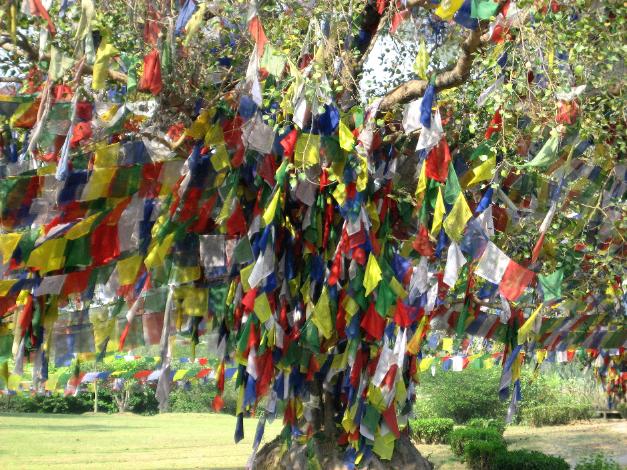
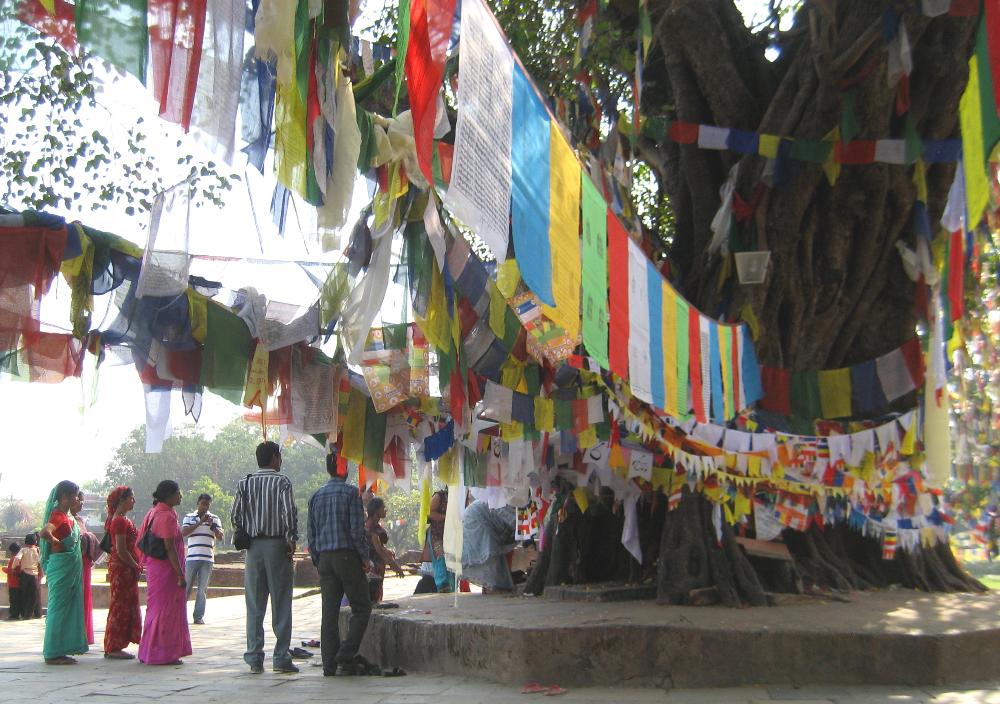
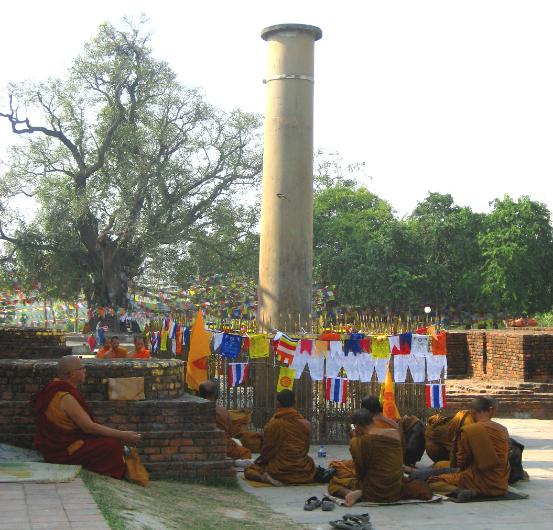
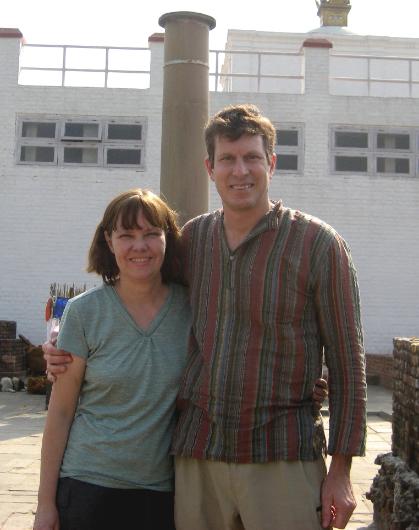
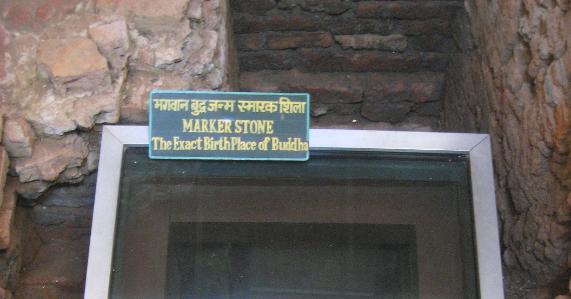
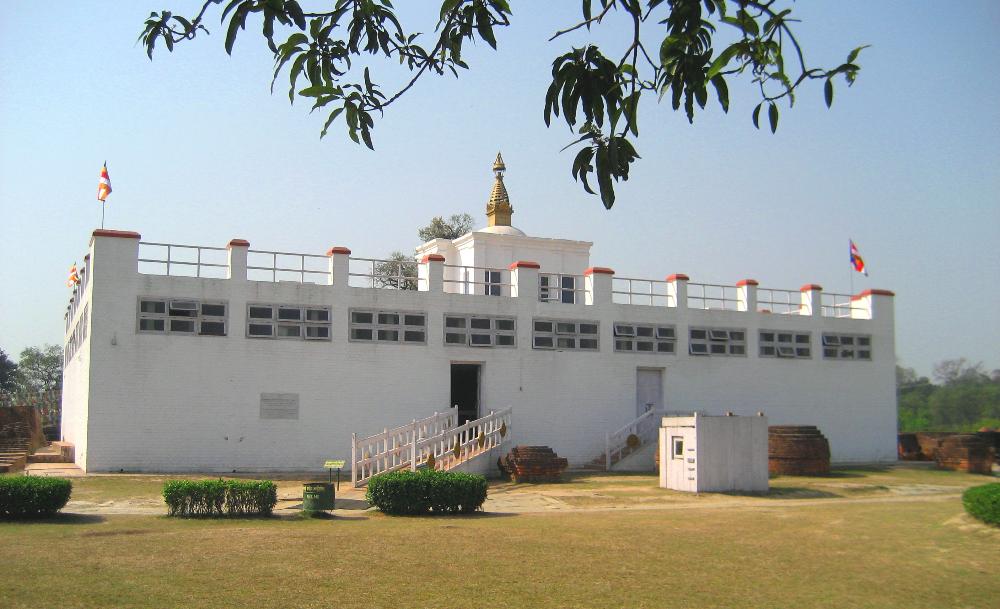
| This simple white brick building houses the exact spot of Buddha's birth |
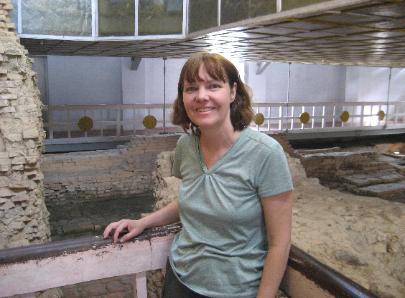
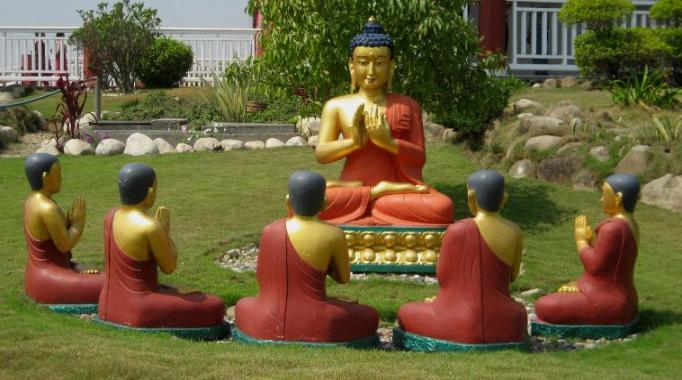
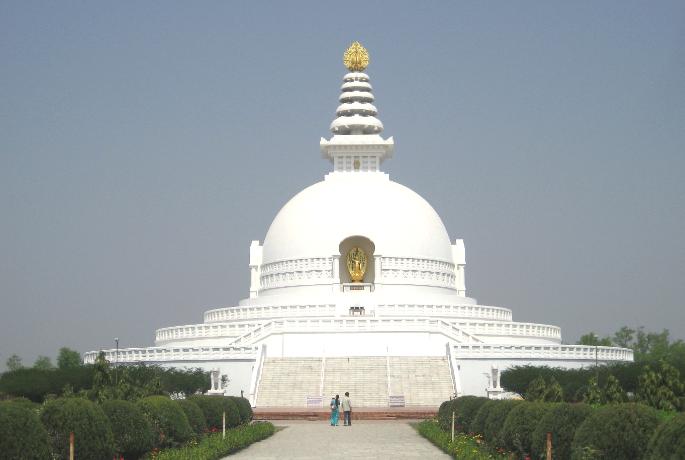
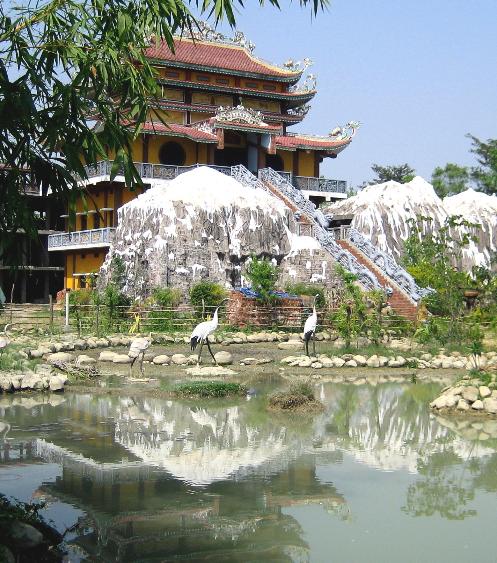
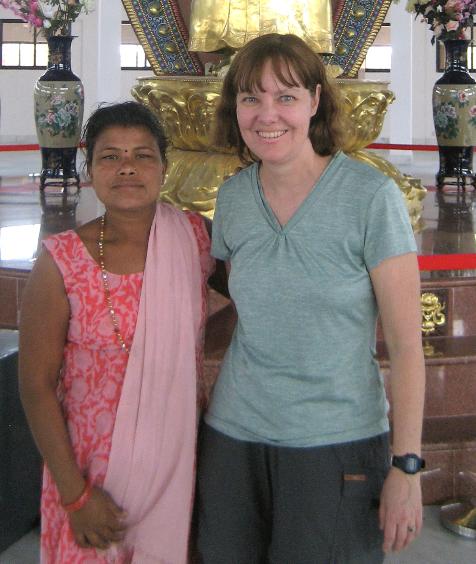
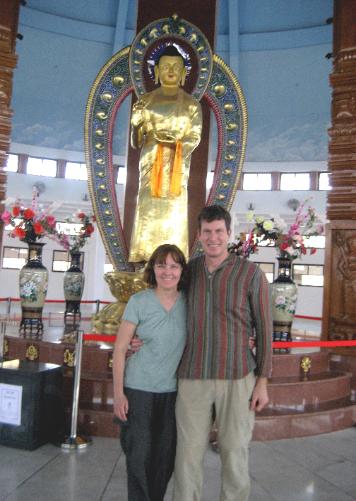
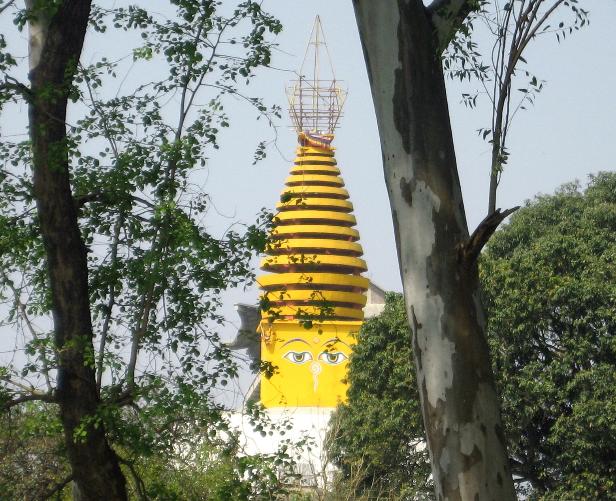
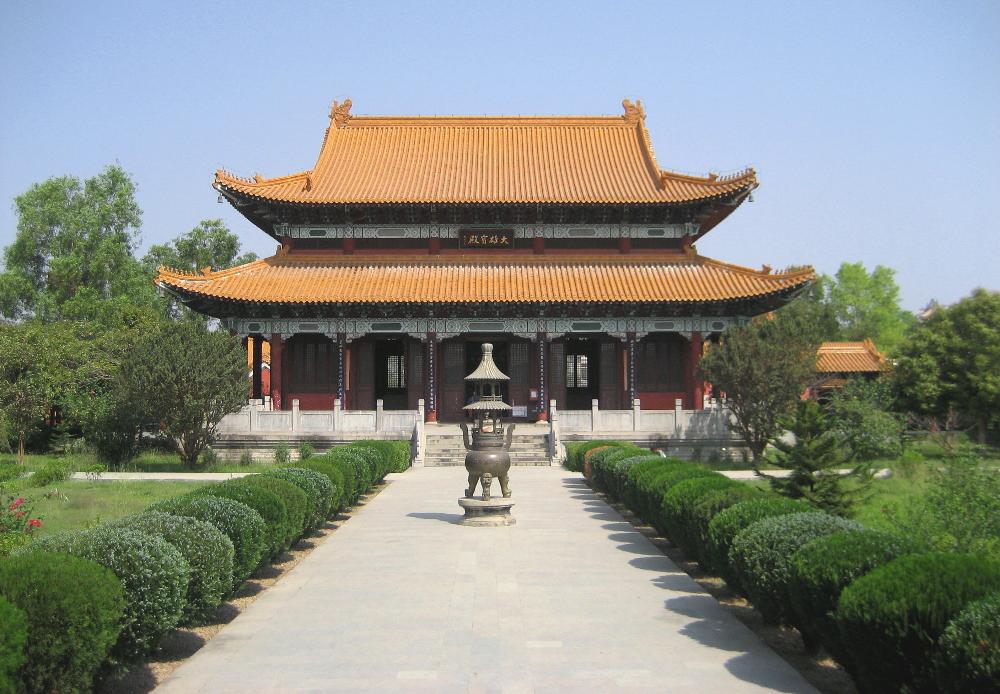
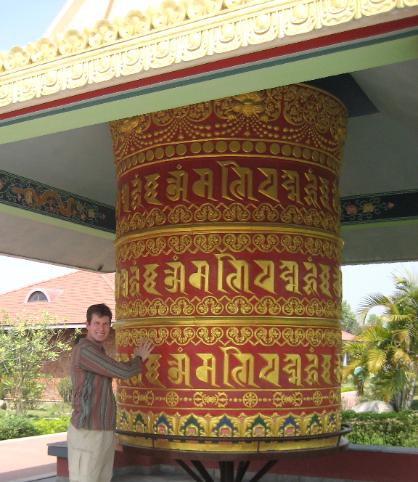
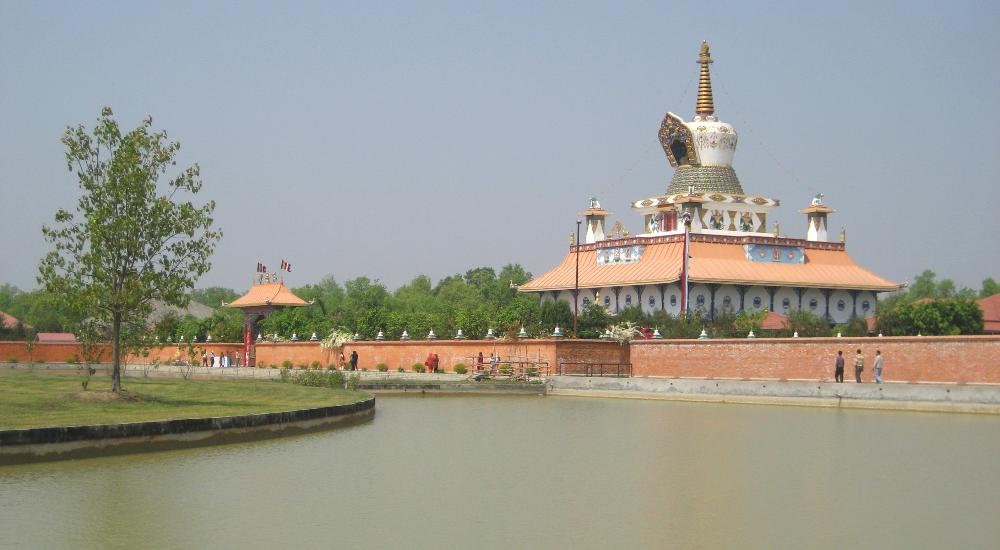
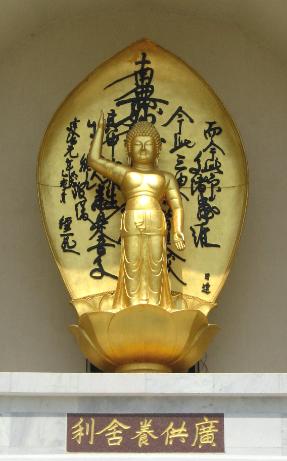
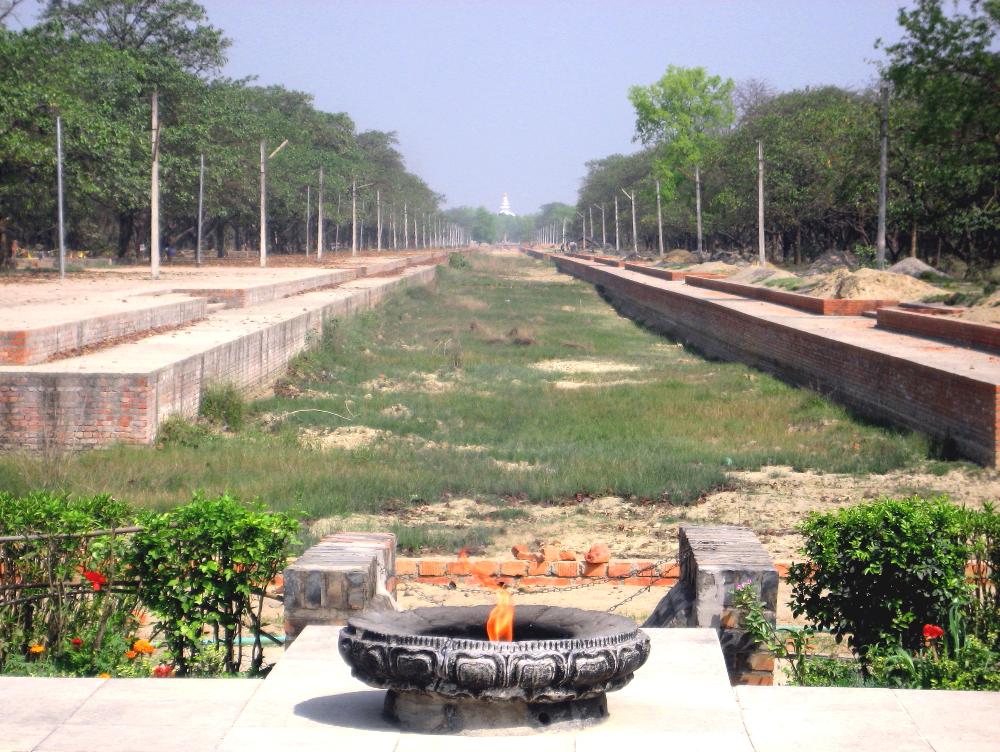
| To the west of the World Peace Pagoda are temples from the Mahayana school of Buddhism (distinguished by monks in maroon robes and a more clamorous style of prayer), and to the east are temples from the Theravada school (with monks wearing saffron-colored robes). It took us three hours just to see the temples on the western side of the complex. |
| A long rectangular canal (still empty of water) runs down the middle of the complex. In front of it is an eternal flame dedicated to world peace, and at the far end is the World Peace Pagoda (shown below). On either side of the canal, spread over 3 km, are Buddhist temples actively being built by countries from around the world. |
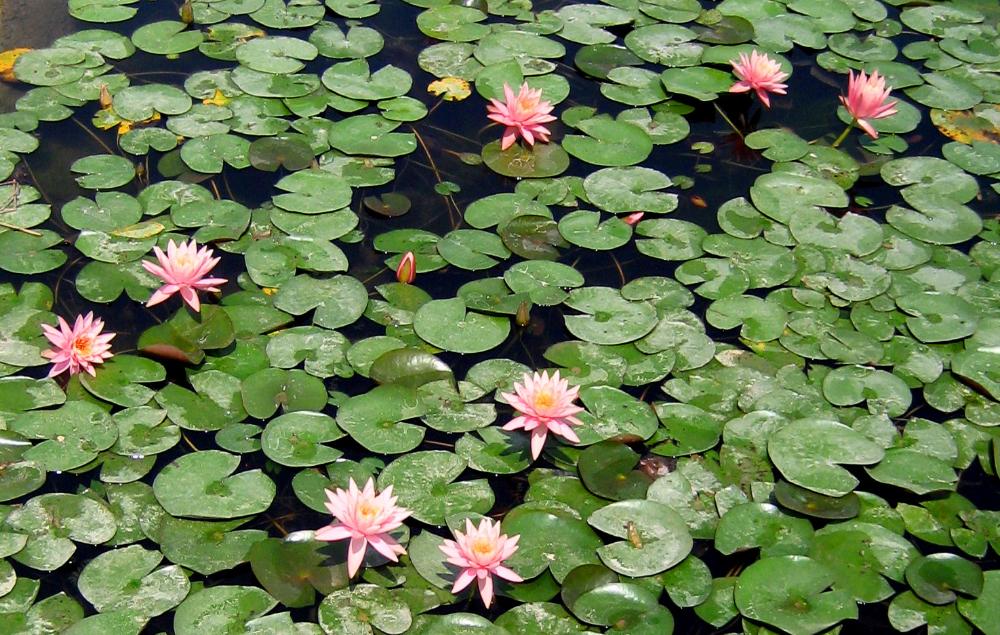
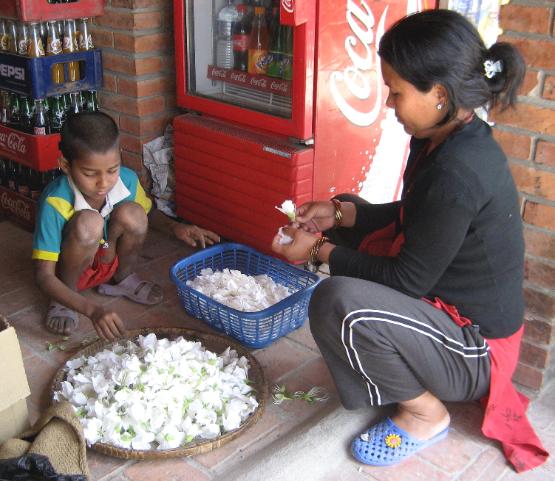
| A mother and her son prepare flower offerings |
| Of course no Buddhist pilgrimage site would be complete without a lotus pond |